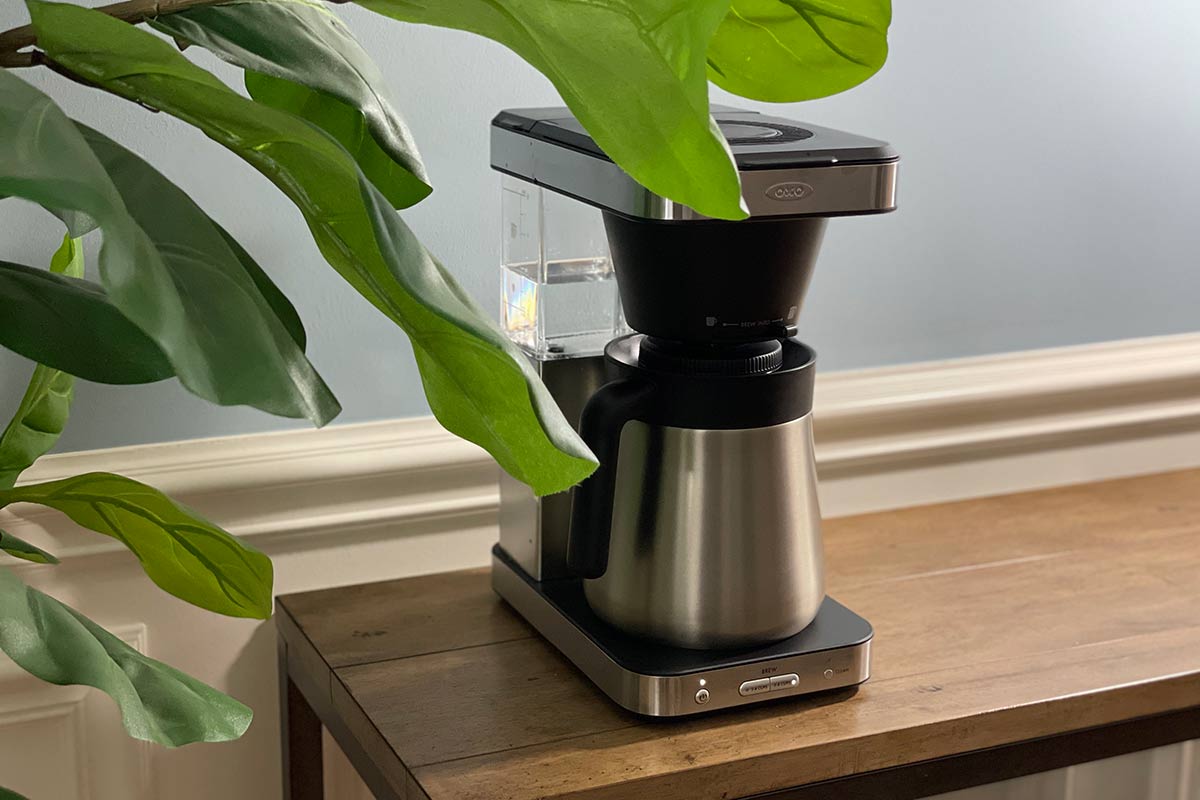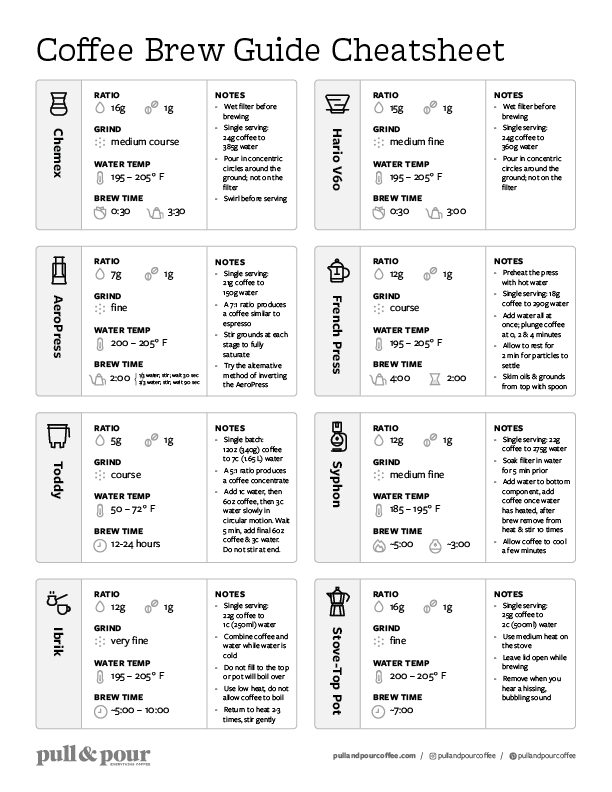Table of Contents
An automated coffee machine is one of the easiest ways to make delicious hot coffee, especially on those busy mornings. All you need to do is add coffee to the filter basket, top up the water tank, and press a button. It’s that simple!
If you’re a regular user of these kinds of coffee makers then you may be familiar with the variation in flavor that comes with each batch of coffee. Have you ever had a batch that was so good it took you to coffee heaven with the taste and aromas yet somehow the next batch just resembles dirty dishwater?
If weak and bitter coffee is commonplace in your home or you often end up with coffee that somehow just tastes off, then we have the solution right here.
It’s surprisingly easy to make really good coffee using an automated machine and this wonderful elixir doesn’t have to be a one-off. To ensure your machine produces consistently great-tasting coffee, follow these simple steps and you’ll be a budding barista in no time at all!
Use Fresh Coffee
Coffee beans are little packages of flavor that go through a lot to bring these wonderful tastes to your morning cup of joe. After processing, the beans themselves are roasted to bring out rich and dark flavors. Oils are released and the coffee bean darkens in color to turn them from a pale, whitish to that rich brown color we all associate with fresh coffee.
The coffee beans mature in flavor following the roasting stage and come to a peak of flavor around day seven. Most coffee roasters recommend waiting 7-10 days after roasting before enjoying your first cup of coffee.
As time passes, the beans let off gas and gradually lose the depth and complexity that gives so much flavor to your coffee. After 3 months the coffee beans start to develop a bland and stale flavor.
This is why it’s so important to buy your coffee from a local roaster or buy online. Coffee sold at grocery stores is often already at the stale stage before you even bring it home and it’s rare to find a brand that states the roasting date on the bag. It can be a little more pricey to buy freshly roasted coffee, but what you get in flavor more than makes up for this.
Grind on Demand
Following on from buying fresh beans, there’s another factor that can cause your coffee to lose a lot of the delicious flavors. The moment coffee is ground up it starts to rapidly ‘de-gas’ and loses flavor even quicker. This is why it’s best to only grind the amount of coffee you are going to use for each pot of coffee so the rest of the beans lock in all that flavor for a lot longer.
When it comes to grinding your beans it’s really important to use a good quality coffee grinder. The cheaper (‘blade’) grinders work a bit like food processors with fast rotating blades that randomly chop the beans into an uneven powder. No matter how careful you are, you always end up with a mix of fine powder and bigger chunks and this causes a lot of inconsistency between coffee batches and causes weak or bitter coffee. The blades in the grinder can also heat up and burn the beans before they even reach the coffee filter.
A burr grinder ensures a cool and even grind and can be set to chop the coffee beans up to the perfect grind size for your coffee machine. This ensures a wonderful, even, flavor extraction and gives a full-bodied cup of joe that’s repeatable with every batch. If you don’t have a burr grinder at home you can ask your local coffee roasters to grind the beans for you. Cafés and coffee shops are often happy to do this as well, especially if you buy the beans from them.
Measure Those Beans
Once you have your lovely fresh coffee ready to go, the next really important step is to make sure you use the correct amount of coffee. The coffee to water ratio is essential because it gives you complete control over the strength of your coffee and allows you to repeat this with ease.
I’d recommend starting with a 1:15 coffee to water ratio, so for 600mL (~20 fl oz) of water, add 40g of coffee. Make sure you weigh out the coffee using a set of digital kitchen scales, not scoops or spoons as these can vary widely each time.
The wonderful thing about this ratio is you can adjust it as much as you like to suit your needs. If you find 1:15 too strong then try a 1:17 ratio next time. If that’s still too much, try 1:20. The coffee you brew has to suit your taste preferences so you can tweak this value many times until you’re satisfied.
Clean all the Parts
There’s a common misconception that you can simply rinse out your coffee pot after use and this cleans it. While this can be done daily, over time coffee oils start to build up to where the coffee has sat and these impart a bitter taste onto your freshly brewed coffee.
It’s really important to keep your coffee machine clean, inside and out, to ensure the very best flavor ends up in your cup of joe. Wipe the outside of the machine with a damp, scratch-free cloth and dry with a lint-free towel. Rinse out the water tank and leave it open to air dry as using a cloth can cause lint to remain here. Wash the coffee pot and filter basket using a mild dish soap to remove coffee oils and rinse thoroughly to get rid of any suds.
Descale your coffee machine as often as the manufacturer recommends as a build-up of limescale can affect the machine’s performance. Make sure you use the recommended descaling solution as using an off-brand product can affect the warranty of the coffee maker. Flush your machine out repeatedly with clean water after descaling to remove any residual taste.
Use a Thermal Carafe Instead of a Glass Carafe with Hot Plate
A really common issue with automated coffee machines is the hot plate. A lot of machines don’t have a good temperature control built into this so the longer you leave the coffee in the pot, the hotter it gets. Some machines will even heat up and burn the coffee straight away leading to a bitter-tasting brew, even after a short period of time.
A good way to avoid this issue is to use a machine that brews into a thermal carafe rather than a glass carafe and hot plate. These work just as well to keep the coffee warm but you do need to pre-heat them first. Add some boiling water to the pot beforehand and discard this when you’re ready to brew your coffee. The thermal carafes work better to retain heat when you fix the lid in place so once the coffee is finished dripping, make sure you place the lid on top.
Use an SCAA Certified Coffee Maker
The Specialty Coffee Association of America (SCAA) is a group of coffee science experts and professional coffee tasters who have teamed up to raise standards throughout the global industry for coffee. They have developed a set of standards that qualify a coffee maker as a ‘Certified Home Brewer’.
Machines that qualify as SCAA Certified coffee makers have features that make them stand out in a crowd. They include a bloom stage as well as the ability to brew coffee at the perfect temperature to avoid burning and bitterness. Brands such as OXO, Bonavita, Ninja, Cuisinart, and Breville all feature models that are Certified Home Brewers.
Conclusion
There are several simple steps you can take to ensure you get the very best coffee out of your automated machine every time. From using the freshest beans and grinding them correctly, to ensure your machine is clean and well cared for, there are loads of little adjustments you can make to improve your coffee.
The key to great tasting coffee is understanding your machine as well as choosing the best quality coffee you can find and you don’t need to be a skilled barista to do either of these. I wish you happy brewing for your next pot of coffee and I hope your next mug is brimming with mouth-watering aromas as well as tantalizing taste sensations!

